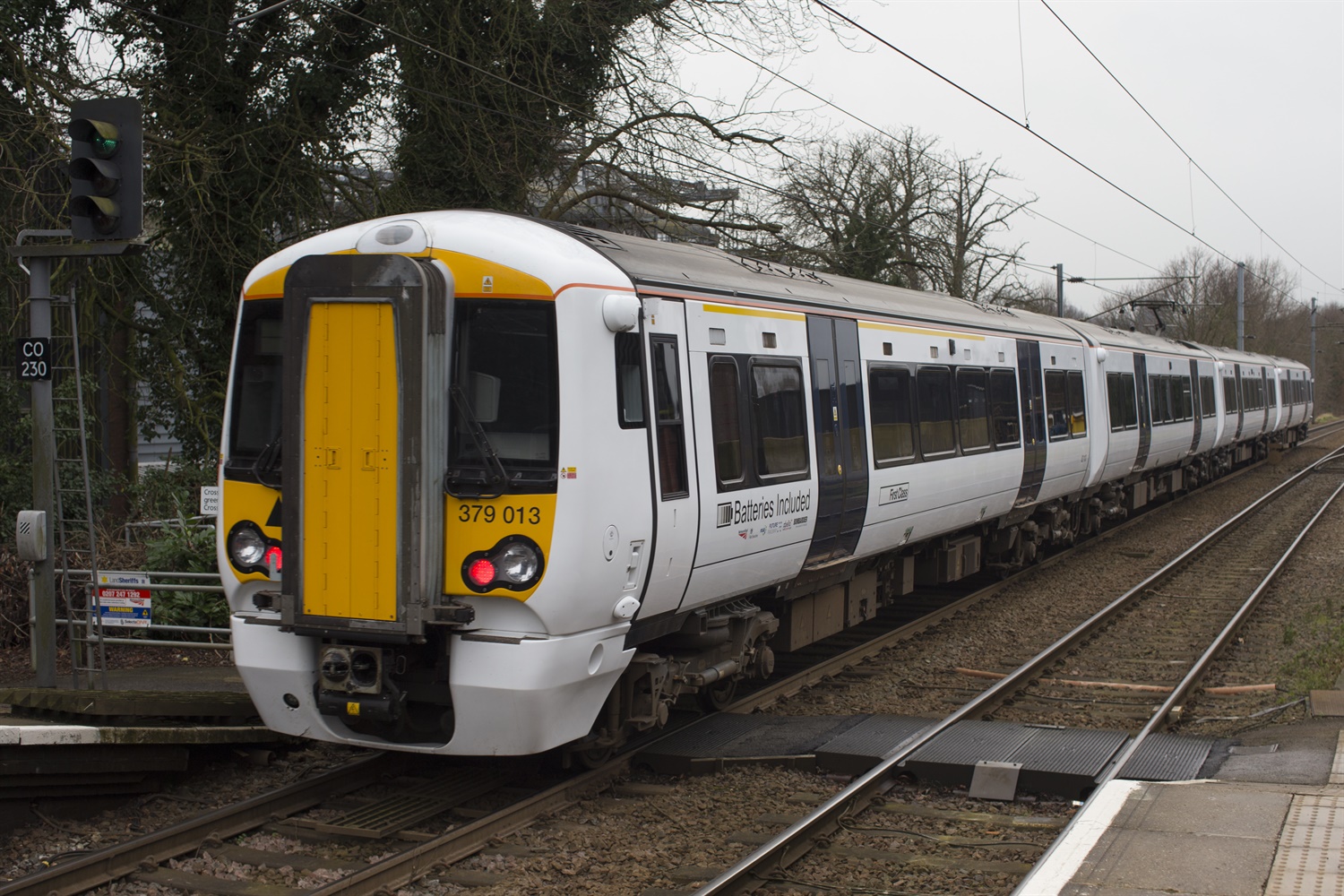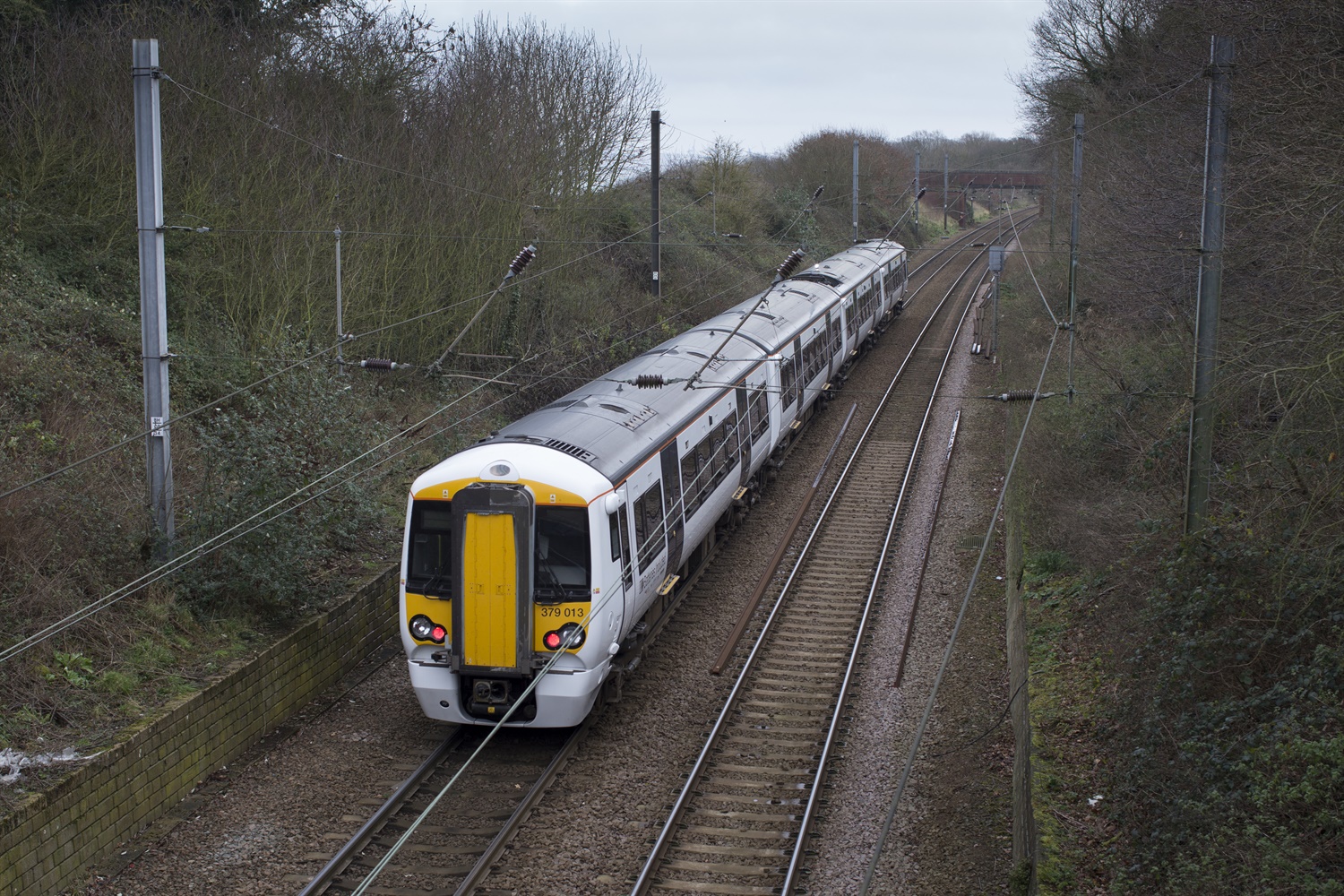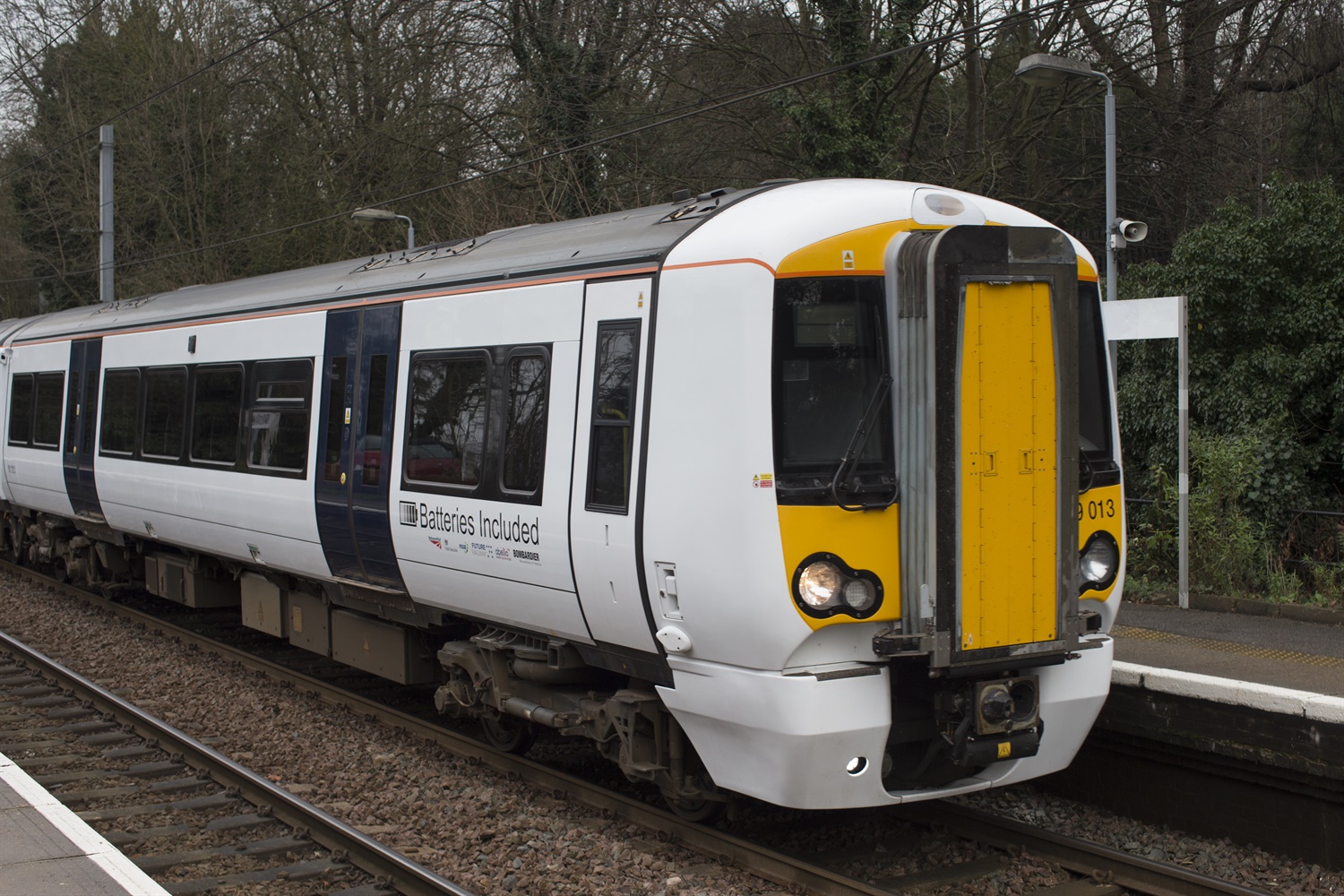13.01.15
Prototype battery-powered ‘IPEMU’ carries passengers for first time
The first battery-powered train to run on Britain’s rail network in more than half a century carries its first passengers this week.
The modified Class 379 Electrostar battery-powered train – also known as an Independently Powered Electric Multiple Unit (IPEMU) – will run in weekday timetable service for five weeks between Harwich International and Manningtree stations in Essex.
It was retrofitted and tested by Bombardier in Derby and Leicestershire. The IPEMU is a joint project between Network Rail, Bombardier, Abellio Greater Anglia, FutureRailway and the Rail Executive arm of the Department for Transport.
The partner companies involved in the project believe there is huge potential for battery-powered trains to bridge gaps between electrified parts of the network and to run on branch lines where it would be too expensive to install overhead electrification.
Data gathered during the experiment will be used to help the wider rail industry determine what form a future IPEMU will take, be it a straight battery unit or hybrid.
On the retrofitted Class 379, the DMOS, PTOSL(W) and DMOC cars are standard, but the MOSL car has been converted to a ‘Trailer Battery Car (BOS)’. The MCM (motor converter module), CET tank and power bogie have been removed, the pipework and cabling have been reconfigured because of equipment being relocated and the toilet is locked out. The auxiliary reservoir has been relocated to the DMOS, and six battery rafts have been installed, alongside new power cables, trailer bogie, a new button on the cab desk, an additional HMI screen, and data acquisition instrumentation.

The battery rafts fitted to the Class 379 unit contain a battery box, isolation switch, power distribution control panel, battery charging inverter, batteries and battery monitoring system, all mounted within a bespoke, purpose-built rig. Their creation follows the successful testing of several types of battery technologies, including lithium iron magnesium (which are being used for these tests) and hot sodium nickel salt.
A project update for the IMechE by Charles Twort of Bombardier and Sam Barrett of Network Rail said the trial performance targets were: a range of 50km (regional service); an acceleration and speed similar to a DMU; operational cycles of 30km battery and 50km overhead; a lifetime of five to seven years; and a “high level of intrinsic safety”.
Any future IPEMU would most likely be designed as a new train and not an adapted unit, to minimise energy consumption, but this project will also provide useful information for retrofit.

It could ultimately lead to a fleet of battery-powered trains running on Britain’s rail network, which would be quieter and more efficient than diesel-powered trains, making them better for passengers and the environment.
Network Rail principal engineer James Ambrose said: “We’ve made terrific progress with this project so far and seeing the battery-powered train in timetabled service is a huge step forward.
“After months of engineering and testing, the train is running just as we would like it. We’ll be using this five-week period to gather data on how it handles during passenger service – most travellers will recognise how quiet and smooth the ride is compared to a diesel-powered train.”
He continued: “We are always looking for ways to reduce the cost of running the railway and make it greener too. This project has the potential to contribute significantly towards both those goals.”
Rail minister Claire Perry MP said: “This is a major milestone in this innovative project, and further proof of our commitment to deliver a world-class rail network fit for the 21st century.
“These trains potentially offer a real alternative where diesel or electrified services aren’t suitable, and I look forward to seeing the results of the trials.”

Battery locomotives have been used on railways for around 100 years, including in munitions factories during World War 1 to avoid the risk of explosion from sparks emitted by steam locomotives. London Underground currently has a fleet of battery locomotives used on engineering trains when the power is switched off for track maintenance and improvement work.
RTM readers have recalled the two-car battery powered train in use on the Aberdeen-Ballater branch from 1958, and the BR Southern Region motor luggage vans that used lead-acid batteries, for example.
Roger Capel noted on the RTM website: “The 1957 battery train (gather it was a BEMU!) was done in the same works as today's IPEMU, using the two standard ‘Derby Lightweight’ DMU bodyshells. At that time DB were putting battery railcars into service in Germany, but I think its immediate despatch to the wilds of Aberdeenshire indicates that it was a BR gesture.”
But the IPEMU is the first modern attempt to trial battery power for potential passenger services.
Tell us what you think – have your say below or email [email protected]